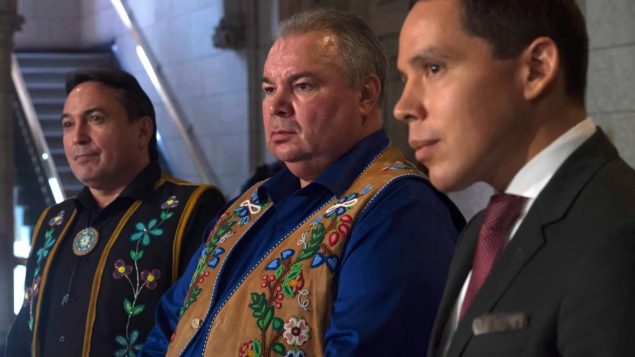The federal government and an opposition MP from the north are clashing over a plan to use isolation tents and temporary shelters to deal with a possible outbreak of COVID-19 in Indigenous communities.
The specialized tents measure about six by five metres and create a “negative pressure” environment conducive to screening and testing, according to Valerie Gideon, senior deputy minister for the First Nations and Inuit Health Branch of Indigenous Services Canada.
“We are looking to procure some of these tents in order to be able to deploy them as rapidly as needed,” Gideon told the CBC’s Olivia Stefanovich.
Gideon says the temporary shelters would house both people who need to self-isolate and health workers who may be sent to the Indigenous communities.
Indigenous Services Minister Marc Miller says the tents and temporary shelters are part of what he says is Ottawa’s “tailored approach” to the specific needs of remote Indigenous communities.

Indigenous Services Minister Marc Miller says his department’s plans to deploy isolation tents to remote Indigenous communities to deal with COVID-19 is part of Ottawa’s “tailored approach” to the specific needs of those communities. However, doubts about the plan are being expressed. (Adrian Wyld/Canadian Press)
But NDP MP Niki Ashton, whose riding includes several northern Manitoba First Nations, says it’s time for a rethink–that the medical tents won’t meet the needs faced by northern Indigenous communities.
“Anywhere in northern Canada, for the next three months, is not the kind of climate where tents of any kind can be used for people who get sick,” Ashton told Stefanovich.
Ashton adds that that First Nations leaders in her riding have told her they are hearing very little directly from the federal government about the plans.
“We need to get real about the First Nations reality, and that’s not what we are hearing from this government and that has to change very quickly. People will get very sick,” Ashton said.
“Everybody on the ground that I’ve been talking to is very concerned about what could happen in their community.”
Health professionals are warning that COVID-19 could disproportionately impact Indigenous communities.

Left to right: Assembly of First Nations Chief Perry Bellegarde, Manitoba Metis Federation President and Metis National Council Vice-President David Chartrand, and President of the Inuit Tapiriit Kanatami Natan Obed say they’re worried about the impact COVID-19 could have on their communities. (Adrian Wyld/Canadian Press)
“Infectious diseases are running rampant in communities and have been uncontrolled for years,” Dr. Sean Hillier, a professor at York University’s Faculty of Health, told the Aboriginal Peoples Television Network’s Brett Forester.
“Indigenous people are really the only people in this country dying from preventable infectious disease.”
With files from CBC (Olivia Stefanovich, Jorge Barrera), APTN (Brett Forester), RCI







For reasons beyond our control, and for an undetermined period of time, our comment section is now closed. However, our social networks remain open to your contributions.